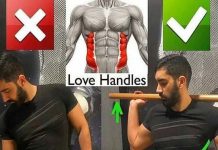Pull Up Exercises
[wp_ad_camp_1]
How to Correctly Pull Up: Basic Rules
Learning how to pull yourself on the horizontal bar is not so difficult. If you succeed, you can effectively work out different muscle groups, in particular, the muscles of the back and shoulder girdle. The broadest, round, trapezius muscles work on the back. The chest is fully involved, as well as the biceps, triceps, deltoid muscles, and forearms. Even the press is involved in the work, which acts as a stabilizer, fixing the static position of the body.
The correct pull-up on the horizontal bar implies the following nuances:
- You must fully control your body. You need to pull yourself up due to muscle strength, without helping yourself with swaying and legs.
- It is necessary to lift the body smoothly, avoiding jerks. During the exercise, you need to pull the chin. If a full, not partial pull-up is done, it should rise above the crossbar.
- After pulling up, you do not need to sharply lower the body down. You must do everything slowly.
- After pull up, you do not need to sharply lower the body down. You must do everything smoothly. The pull down should take as much time as the pull up. Hold the crossbar tightly.
- The body should hang down right when pull up, no need to jerk and bend. Small deflection in the back is allowed.
These are just general rules, and for each type of pull-ups there are a number of recommendations.
Training Pullups: Types of Grips
[wp_ad_camp_2]
Almost all types of pull-ups assume a standard grip as the starting position. At the same time, the back is slightly bent, legs a pull and crossed. The following grip options are available:
By type of grip (position of arms, grabbing the crossbar):
- Upper (direct / normal, 1);
- Lower (reverse / “female” / on biceps, 2);
[wp_ad_camp_3]
Depending on the type of grip, the emphasis of the load on the muscles shifts. Direct grip more actively involves the back muscles. Reverse grip includes biceps. Neutral grip (palms facing each other) connects the brachial / brachioradial muscles and biceps more.
Depending on the setting of the hands (the distance between the hands), the width of the grip:
- Narrow (accentuated work of the muscles of the hands);
- Medium (uniform load distribution of by the muscles of the back and arms);
- Wide (back muscles, “wings” are involved).



















































